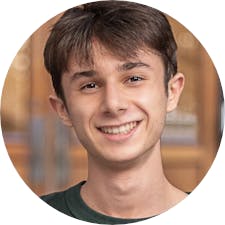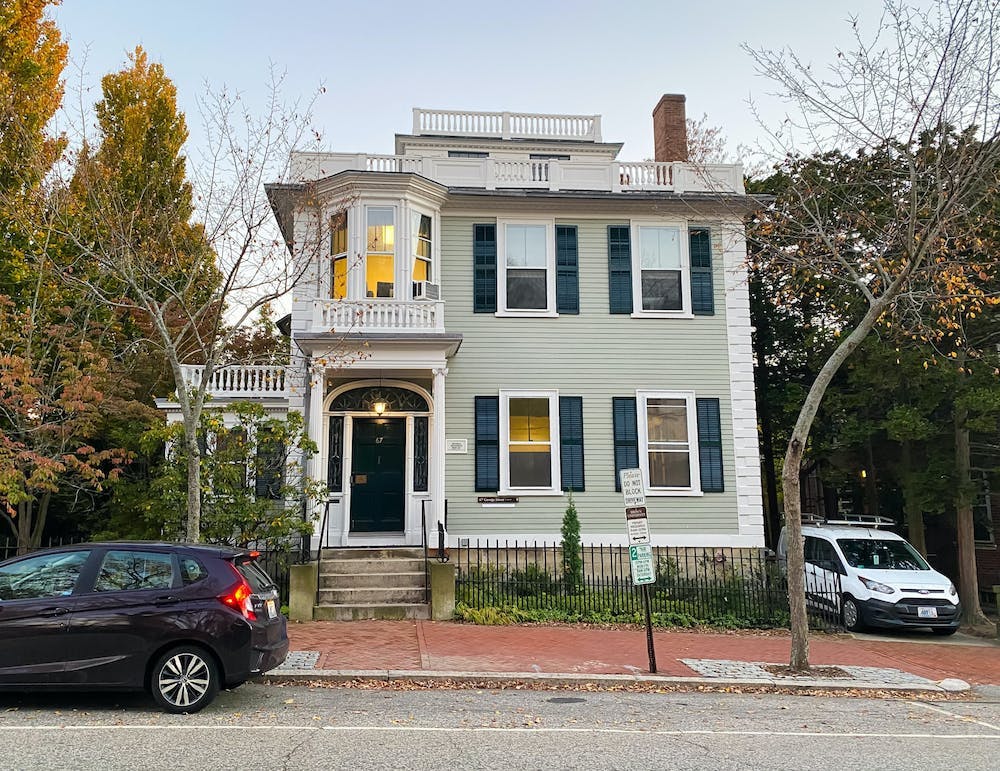This semester, six students are participating in a group independent study project to learn the Indigenous languages of their communities. Led by Nitana Hicks Greendeer ’03, visiting assistant professor of American Studies, the students have spent the semester on individual journeys to learn several Indigenous languages that are not offered as courses at Brown, such as Western Abenaki, Navajo and Yucatec Maya.
The origins of this semester’s GISP can be traced back to last fall, when three Native students expressed interest in launching an independent study to learn the Hawaiian, Western Abenaki and Yucatec Maya languages. They brought the idea to Makana Kushi GS, a PhD student in American studies, who agreed to oversee the project and teach Hawaiian to interested students. News of the project spread through student group Natives at Brown, Kushi said, and the project quickly grew to include 20 students for the fall 2021 semester.
Kushi agreed to oversee the project because she believed it was “worthwhile” to give students the opportunity to receive credit for the time and effort they put into studying Indigenous languages. Kushi herself studied Hawaiian in college, and she recalled it being “a really big part of (her) undergraduate experience.”
The project was initially offered as a departmental independent study project within the Native and Indigenous Studies Initiative, Kushi said. Due to logistical constraints, the project transitioned to a GISP after one semester as a DISP and has run as such for two semesters, Kushi noted.
The six students, all of whom identify as Indigenous, meet twice a week to discuss the language learning process and its broader history, including the “difficulties and baggage” that come with “learning a language that didn't just disappear on its own (but) was actually actively suppressed,” Kushi said.
One of the main challenges students face has been access to language learning resources, Hicks Greendeer said. In many cases, resources such as textbooks or native speakers are either not available or are concentrated in a specific geographical region far from Rhode Island, she added.
This was the case for Roslyn Coriz ’22.5, a Herald photographer, who is a member of the Kawaika’a people and has been studying the Keres language since the project’s inception last fall. Keres is not a written language, and therefore Coriz struggled to find written resources that she could use for studying, prompting her to develop her own.
At first, Coriz hesitated to record Keres in the Latin script used by English and other colonizing languages. But her grandparents, who are native Keres speakers, encouraged her to “use what is available” to her when studying the language, so she began writing it down.
Having her grandparents as mentors has been a “really, really great resource in learning the language,” Coriz said. By speaking with her grandparents, Coriz has not only learned the Keres language, but also the history and stories of her community.
Chandlee Crawford ’24, a member of the Abenaki Nation of Missisquoi, has studied the Western Abenaki language since the project’s inception. The main challenge, he said, has been finding ways to practice speaking the language. To study Western Abenaki, Crawford has had to rely on linguistic texts written in the early 19th century that he accesses through Brown’s libraries.
But according to Crawford, the written portions of the language are the “least important” in Western Abenaki. “I can't practice with anyone face to face,” Crawford said, which is difficult “considering that (Western Abenaki) is a spoken language.”
Many of the students in the project have also had to design their own syllabi, which Crawford said was a “learning experience.” Crawford had previously taken French at Brown, so he started by designing his syllabus like a French course. He quickly discovered that this format “does not work for (Western) Abenaki” and the resources available to him for studying.
“As I went along, I learned how to work better with the resources I had,” Crawford said.
Coriz and Crawford said that meeting as a group has helped them in their language learning journeys. Students in the project have been able to discuss the challenges they face and share resources and tips with one another, such as transcription services or templates for self-assessments, Coriz said.
“Every time that I've met with a group, I've always walked away with (more) motivation” to learn Keres, Coriz said. “There's a lot of inspiration that is found in talking with other people about their experiences.”
“I think the students appreciated learning so much from each other, even if they spoke different languages,” Kushi said. “They were surprised about how useful it was to be in community (and to have) a support structure” of students on similar learning journeys.
Kushi also noted that the project has hired Indigenous speakers to meet with students, allowing them the opportunity to practice speaking their languages and ask questions. But it can be difficult to find mentors for each language, Kushi added, and most of these meetings take place virtually.
Both Hicks Greendeer and Kushi emphasized that student commitment has made the project successful. “It was really the students who created this and continue to sustain it,” Kushi said. “The energy that they have for (the project) is what makes it happen.”
Due to limitations on the number of times a GISP can run, Hicks Greendeer said that she will be teaching the project next semester as an official course at the University. Though the details of the course are forthcoming, Hicks Greendeer noted that the format will allow students to gather as a group while continuing to study their languages independently.
Crawford and Coriz said they are grateful for their experiences in the project. While Crawford noted that “there is zero obligation for any Native person to learn their language,” he believes that the project provides a unique opportunity for Native students and he hopes others can take advantage of it in the future.
Coriz emphasized that “any effort, no matter how small, that's put into your language is valuable.” Coriz especially appreciated that the project created a space for students to “be vulnerable in the learning process.”
“Being in community has created a very, very valuable space” for Native students learning their languages, she said.

Sam Levine is a University News editor from Brooklyn, New York covering on-campus activism. He is a senior concentrating in International and Public Affairs.





